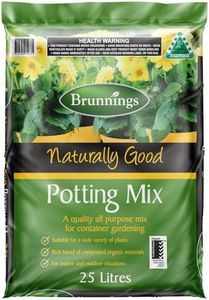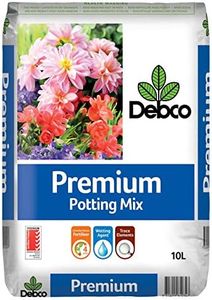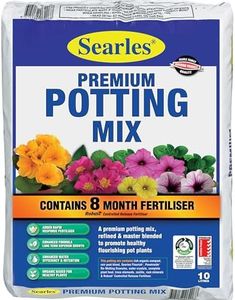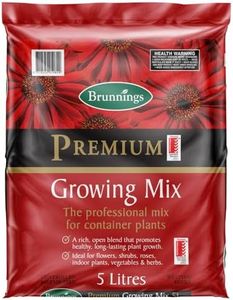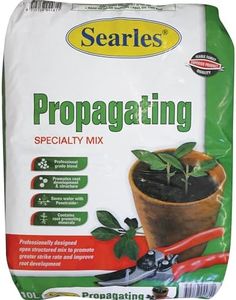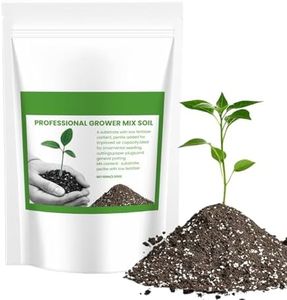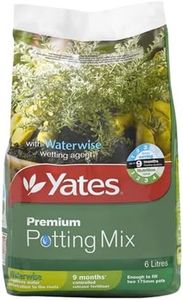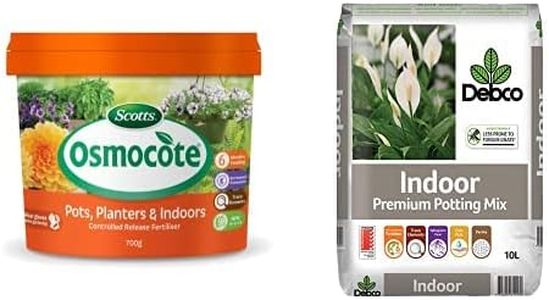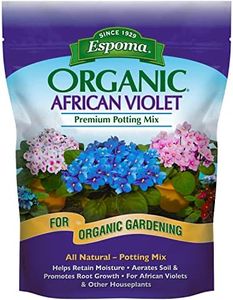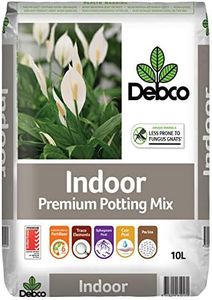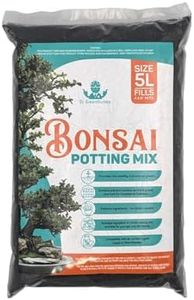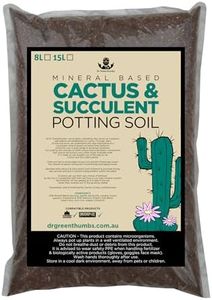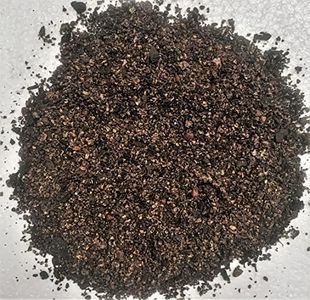We Use CookiesWe use cookies to enhance the security, performance,
functionality and for analytical and promotional activities. By continuing to browse this site you
are agreeing to our privacy policy
10 Best Potting Soil
From leading brands and best sellers available on the web.Buying Guide for the Best Potting Soil
Choosing the right potting soil is important for healthy and thriving plants, whether you’re gardening indoors or outdoors. Potting soil isn’t just 'dirt'—it’s a carefully mixed combination of ingredients designed to provide the right nutrients, air, and moisture flow to your plants’ roots. The mix you pick can make a big difference in your success, so knowing what to look for in potting soil helps ensure your plants get the best start.Drainage and AerationDrainage and aeration refer to how well the potting soil allows water to flow through and air to reach plant roots. Good drainage means excess water won't suffocate roots, while aeration helps roots 'breathe.' Potting soils with high drainage often contain ingredients like perlite, pumice, or sand, and are usually lighter in texture. These are great for succulents and cacti, which need less moisture. Soils that hold more water due to added peat moss or coconut coir are best for plants that like steady moisture, such as ferns or tropical plants. To pick the right one, think about your plant’s natural habitat—drier, sandy environments need faster-draining soil, while lush, moisture-loving plants do better with soil that holds water a little longer.
Nutrient ContentNutrient content is about how much and what kinds of fertilizers or organic materials are mixed in the potting soil. Some mixes come with added fertilizer, so plants get an initial boost, while others rely on composted material for slow-release nutrition. If you're growing young seedlings or starting cuttings, choose a mild mix with less fertilizer to avoid burning tender roots. Established plants or heavy feeders (like vegetables) do well with richer soil that has more nutrients. Your choice depends on your plant’s stage and type—delicate young plants need gentle soils, while mature, robust plants benefit from richer soils.
Texture and Particle SizeTexture and particle size describe whether the potting soil is coarse, fine, or somewhere in between. Fine textures are better for small seeds and tender seedlings, as they allow delicate roots to grow easily. Coarser blends with larger particle sizes improve airflow and drainage, better for bigger plants and those that don’t like wet feet. If you’re unsure, a medium-texture general purpose potting mix covers most needs, but match the soil texture to the kind of plant and its growth phase for best results.
pH LevelpH is a measure of how acidic or alkaline the potting soil is. Most common houseplants and vegetables prefer a pH that’s slightly acidic to neutral (between 6.0 and 7.0). If you’re growing specialty plants like blueberries or azaleas, look for soil labeled for 'acid-loving' plants, which is more acidic. For most other plants, a balanced mix is suitable. Always check if your plant has special pH needs before choosing, as using the wrong pH can affect how well they absorb nutrients.
SterilitySterility means whether the potting soil is treated to kill weed seeds, pests, and diseases. Sterile mixes are a good choice for starting seeds or delicate indoor plants because they reduce the risk of introducing problems. Non-sterile soils, often those with added compost, are good for established outdoor plants that can handle a little more microbial activity. For young or indoor plants, stick to sterile mixes to avoid headaches with pests; for mature outdoor plants, non-sterile mixes can offer benefits from beneficial microbes.
Specialized MixesSome potting soils are made for a specific type of plant, like cactus/succulent mix or orchid mix. These specialized options use unique blends and ingredients to suit the water and nutrient needs of certain groups of plants. For instance, orchid mixes contain more bark for airflow, while cactus soils are gritty for quick drainage. If you have a specific plant type, choosing a targeted mix can make care much easier and help your plant grow better.
